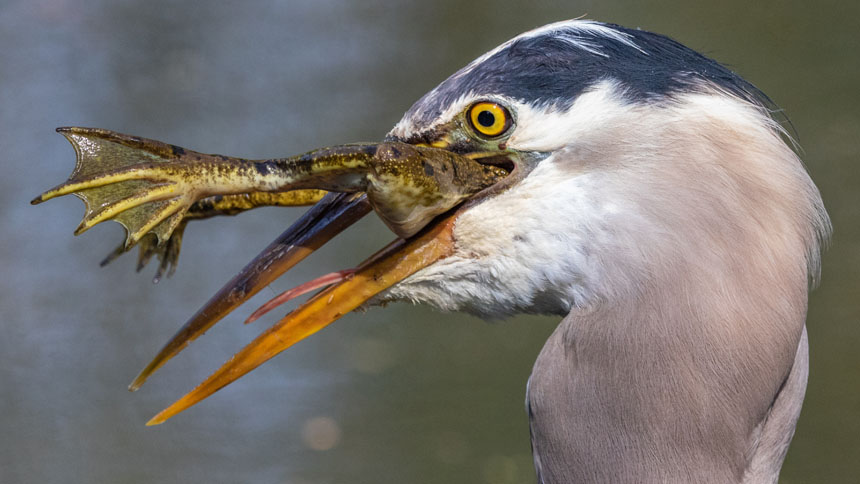
Introduction
Frogs are fascinating amphibians that play crucial roles in their ecosystems, serving as both predators and prey. While they are adept at evading many threats, frogs are not without their own set of predators. Understanding what animals eat frogs provides insight into the complex food webs in which these amphibians exist. This article will explore the various predators of frogs, their hunting strategies, and the ecological significance of these interactions.
The Ecological Role of Frogs
Frogs are found in a variety of habitats, including freshwater biomes, forests, grasslands, and even urban areas. They undergo a complex life cycle that includes stages as eggs, tadpoles, and adult frogs. Frogs are important for several reasons:
- Pest Control: Frogs consume vast quantities of insects, helping to control pest populations in their environments.
- Food Source: Frogs serve as a vital food source for a wide range of predators, contributing to the biodiversity of their ecosystems.
- Bioindicators: Frogs are sensitive to environmental changes, making them effective bioindicators of ecosystem health. Their presence or absence can signal changes in habitat quality or pollution levels.
- Nutrient Cycling: As both predators and prey, frogs play a role in nutrient cycling within their ecosystems.
Common Predators of Frogs
Frogs face predation from a diverse array of animals, including birds, mammals, reptiles, and even other amphibians. Below is a detailed overview of the primary predators of frogs.
Birds
Birds are among the most common predators of frogs. Their keen eyesight and agility make them effective hunters. Some notable bird species that eat frogs include:
- Herons: These wading birds are known for their patience and precision when hunting frogs in shallow waters.
- Egrets: Similar to herons, egrets use their long legs to wade through water and catch frogs.
- Crows: Crows are opportunistic feeders and will eat frogs when available.
- Owls: Nocturnal hunters, owls often prey on frogs during the night.
- Kingfishers: These birds dive into the water to catch frogs and other aquatic prey.
Mammals
Many mammals are also known to prey on frogs, taking advantage of their relatively small size. Common mammalian predators include:
- Raccoons: These omnivorous mammals are skilled at foraging for frogs in wetlands and along riverbanks.
- Foxes: Foxes will hunt frogs as part of their diverse diet.
- Otters: Aquatic mammals like otters often hunt frogs in rivers and lakes.
- Skunks: Skunks are opportunistic feeders and will eat frogs when they can catch them.
- Cats and Dogs: Domestic pets may also hunt frogs, whether intentionally or during play.
Reptiles
Reptiles are significant predators of frogs, with many species actively seeking them out as food. Key reptilian predators include:
- Snakes: Various snake species, including garter snakes and water snakes, are known to eat frogs. Their ability to constrict or swallow prey whole makes them effective hunters.
- Lizards: Some lizards, such as monitor lizards, will prey on frogs when the opportunity arises.
- Alligators and Crocodiles: In aquatic environments, larger reptiles like alligators will consume frogs as part of their diet.
Fish
Certain fish species are also known to eat frogs, particularly when they are in their tadpole stage or when frogs are near the water’s surface. Notable fish predators include:
- Bass: Largemouth and smallmouth bass are known to eat frogs, especially during the warmer months.
- Pike: This predatory fish will consume frogs and other small animals that enter the water.
- Catfish: Some catfish species will eat frogs when they are available.
Other Amphibians
Interestingly, some frogs are cannibalistic and will eat other frogs. Larger frog species may prey on smaller frogs or tadpoles, contributing to their role as both predator and prey in the ecosystem.
Invertebrates
Certain invertebrates also pose a threat to frog eggs and tadpoles. For example:
- Dragonfly larvae: These aquatic predators will hunt tadpoles and small frogs.
- Water beetles: Some species of water beetles will consume frog eggs and tadpoles.
Table of Frog Predators
| Predator Type | Specific Predators | Description |
|---|---|---|
| Birds | Herons, Egrets, Crows, Owls, Kingfishers | Birds that hunt frogs using their keen eyesight and agility. |
| Mammals | Raccoons, Foxes, Otters, Skunks, Cats, Dogs | Various mammals that opportunistically feed on frogs. |
| Reptiles | Snakes, Lizards, Alligators | Reptilian predators that actively seek out frogs as food. |
| Fish | Bass, Pike, Catfish | Fish species that consume frogs, especially during the tadpole stage. |
| Amphibians | Larger Frogs | Some frogs will eat smaller frogs or tadpoles, exhibiting cannibalistic behavior. |
| Invertebrates | Dragonfly larvae, Water beetles | Aquatic invertebrates that prey on frog eggs and tadpoles. |
Adaptations and Defense Mechanisms of Frogs
Frogs have evolved various adaptations and defense mechanisms to evade their predators:
- Camouflage: Many frogs have skin patterns and colors that help them blend into their surroundings, making it difficult for predators to spot them.
- Toxicity: Some frogs, such as poison dart frogs, produce toxic secretions that deter predators from eating them.
- Jumping Ability: Frogs are known for their powerful hind legs, which allow them to leap away quickly from threats.
- Behavioral Strategies: Frogs may employ various behaviors, such as remaining still or hiding in vegetation, to avoid detection.
- Nocturnal Activity: Many frog species are nocturnal, reducing their chances of being spotted by daytime predators.
Conclusion
Frogs play a vital role in ecosystems as both predators and prey. They face numerous threats from a wide variety of animals, including birds, mammals, reptiles, fish, and even other amphibians. Understanding the complex relationships between frogs and their predators provides valuable insight into the dynamics of ecosystems and the importance of biodiversity.By recognizing the challenges frogs face and the adaptations they have developed to survive, we can appreciate the delicate balance of nature and the significance of preserving frog populations and their habitats.
Frequently Asked Questions
- What animals eat frogs?
Frogs are eaten by a variety of animals, including birds (herons, crows, owls), mammals (raccoons, foxes, otters), reptiles (snakes, alligators), and fish (bass, pike). - Do frogs eat other frogs?
Yes, larger frogs will eat smaller frogs and tadpoles, exhibiting cannibalistic behavior. - What adaptations help frogs avoid predators?
Frogs use camouflage, toxicity, jumping ability, behavioral strategies, and nocturnal activity to evade predators. - Are all frogs toxic?
Not all frogs are toxic, but some species, like poison dart frogs, have developed toxic skin secretions to deter predators. - Why are frogs important to ecosystems?
Frogs help control insect populations, serve as food for various predators, act as bioindicators of environmental health, and contribute to nutrient cycling.
References
“Frog Predators: What Animals Eat Frogs?” Toads and Frogs. https://toadsnfrogs.com/frogs-predators/


